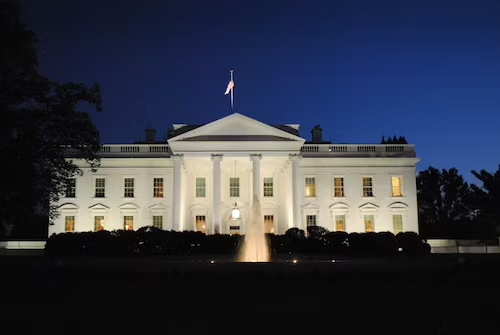At the end of October, President Biden issued a sweeping executive order concerning the artificial intelligence technology of private companies. According to the White House, the order is to protect the country from any AI technology that poses a risk to “national security, national economic security, or national public health and safety.”
Biden pushed the order through under the Defense Production Act, a law passed in 1950 at the start of the Korean War with the goal of extending the power of the president over private companies and domestic industry in the interest of national security.
The current executive order requires private companies to share the following information with the federal government:
- When they train a new AI model
- Their existing cybersecurity practices
- Results of red teaming exercises, aka safety results, which reveal vulnerabilities in AI models
- Training activity of large-scale computing clusters
Who and What is Involved?
The executive order involves several federal government branches working together toward the common goal of AI regulation.
- The National Institute of Standards and Technology will set and implement the standards for the safety test results and clear them before the technology is released to the public.
- The Department of Energy will be responsible for evaluating how AI output can contribute to biological or chemical attacks and how it can affect cyberattacks on critical infrastructure.
- The White House Office of Management and Budget will develop guidelines and tools for government employees who buy AI services from the private sector.
- The Commerce Department will create guidance about “watermarking” AI content, i.e., creating an invisible symbol to designate content that is AI-generated. The goal is to protect Americans from AI-enabled fraudsters and bad actors.
- The State and Commerce Departments will work on a global level to establish international frameworks for “harnessing AI’s benefits and managing its risks and ensuring safety.”
- The National Security Council and the White House Chief of Staff will create a National Security Memorandum to ensure the safe and ethical use of AI by the military and intelligence industries.
- The Federal government will provide clear guidance, training, and technical assistance to prevent racial bias in AI algorithms. It will also develop best practices for AI use in the criminal justice system.
Additionally, agencies that fund life-science projects will develop new standards for biological synthesis screening to protect against the threat of AI-engineered dangerous biochemicals. These standards will become a requisite for federal funding.
The White House AI Council, headed by White House deputy chief of staff Bruce Reed, was created to ensure compliance with the new order.
The Importance of AI Regulation
AI regulation has been discussed for years, but as often happens, technology has outpaced governments’ abilities to regulate it. As AI has become more prevalent, governments around the world have been working faster to draft regulations to promote national security, among other concerns.
The EU, Canada, Brazil, and Japan are working on AI legislation, while China has already adopted several laws regulating the industry. Now the United States has issued its own executive order.
Why is AI regulation so important? According to Sam Altman, Silicon Valley entrepreneur and CEO of OpenAI, AI technology is so powerful it has the potential to bring about human extinction. (And yet, at the same time he warned the US government to take action to regulate this influential technology, he is cautiously but firmly continuing to develop AI services.)
Additional (non-apocalyptic) reasons for AI regulation were presented last week at the AI Safety Summit in the UK. Attendees discussed the risks of AI technology, such as the increasing dominance of powerful private tech companies over world economies and social systems, as well as outputs of AI algorithms that can determine a person’s financial status or health treatments, sometimes unfairly. AI regulation may also help with the inherent racial biases that have been seen in various AI algorithms.
Outlook for the Future
Biden’s new executive order is a good jumping-off point for AI regulation in the US, but it has created many directives that will take time to implement. The departments and agencies tasked with various objectives need to start putting the wheels into motion. It will not happen overnight, but it’s certainly a step in the right direction toward creating comprehensive regulation for a powerful and dynamic industry.
To find out more, please reach out to info@interforinternational.com





